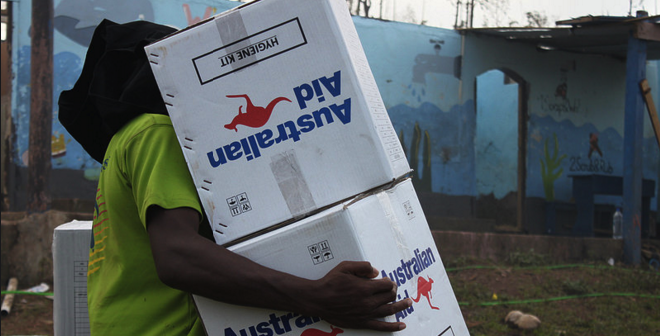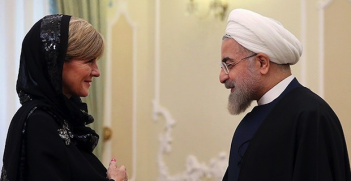Public Opinion on Australian Aid: Cuts and Criticism

Recent years have brought significant changes in Australia’s aid program. Public and expert opinion on these changes raise concerns.
Since the 2013 election, total cuts to the Australian aid budget stand at $7.9 billion over four years, of which $601 million was cut in 2014-15. There are further budget cuts forecasted at $1.2 billion in 2015-16, $1.7 billion in 2016-17 and $3.5 billion in 2017-18. Professor Stephen Howes, a development economist at the Australian National University (ANU) commented that if the current budget plan continued, Australia’s ‘generosity index’ would reach 0.21 by 2017-18. This would be the least generous index in the history of the country’s formal aid program, brought about by unprecedented cuts since records began in 1960. Furthermore, AusAID has been fully integrated into the Department of Foreign Affairs and Trade (DFAT). Significant consequences of this include staff transition and reduction.
With regards to these changes in Australian aid, different parts of Australian society showed varying opinions. According to a study conducted by researchers at the Development Policy Centre at the ANU, youth groups, women and people from higher educational backgrounds and the political left tend to endorse aid. In the meantime, while the majority of members of the general Australian public were broadly supportive of government aid, they also tended to favour aid cuts. The study also demonstrated that most Australians preferred aid given for philanthropic purposes rather than invested in security to advance Australian interests.
Meanwhile, the dramatic impact of the budget and policy changes on Australian aid drew somewhat different reactions from the stakeholders. These results were revealed in the 2015 Australian aid stakeholder survey launched at the 3rd Australasian Aid Conference at the Crawford School, ANU on 11 February 2016.
The results showed that:
- Compared to 2013, more people perceive aid programs to be less effective and to be worsening in quality by 11%.
- With regards to the worsening quality of Australian aid, stakeholders indicated a loss of strategic clarity, transparency and staff expertise as three major problems.
- Perceived loss of strategic clarity in Australia’s aid program has been derived from a more strategic and commercial focus rather than poverty eradication.
- Almost three quarters of 2015 respondents perceive staff expertise as a weakness or a great weakness of the aid program.
- 75% of respondents think transparency is a weakness or a great weakness of the aid program compared to the 25% in 2013.
The stakeholder survey drew on the perceptions of experienced members of the Australian aid community, from senior executives in the aid industry to stakeholders with a more general interest. These clearly show worrisome indicators and highlight areas for thought by the Turnbull Government. While the results do not necessarily reflect the views of the entire Australian population, the survey nevertheless has significance as it represents the observations of key stakeholders in the aid industry who collaborate with the government through the public-private partnership.
During the Opening Address at the Conference DFAT Secretary Peter Varghese AO also highlighted the importance of the links between private sectors especially in the fields of economic development, poverty alleviation, investment and innovation for developing countries. In this sense, Australia’s development assistance effectiveness will worsen if partnering stakeholders continue to believe the aid program is deteriorating. Stakeholders’ opinions ought not to be neglected and DFAT should embrace and accommodate these voices so as to enhance the effectiveness of the current Australian aid program and underlying policies.
Regarding future approaches for the Australian government aid program, Mr Varghese delivered a nuanced message. He stated that while policy challenges are genuinely complex, DFAT would focus on reinforcing its workforce planning by recruiting and retaining development professionals and sector experts. He also emphasised the importance of establishing both internal and external capabilities and addressed its current state of ‘testing new paths for the delivery of effective aid’.
In light of China’s and the United Kingdom’s recent efforts to increase their involvement in development assistance, Australia must consider if “testing” its aid policies is the right way forward. Australia must not confine itself to an approach of aimless deliberation and instead focus on maintaining its favourable position in aid diplomacy, as well as its role as a benign donor. On this point Reverend Tim Costello, Chief Executive of World Vision Australia, cautioned that a reform of Australia’s aid program therefore must not be based on ‘balancing the books on the backs of the poor.’
Jiye Sarah Kim is a Masters Candidate in International Area Studies at the Graduate School of International Studies, Seoul National University and a former intern at the Australian Institute of International Affairs’ National Office. This article may be republished under a Creative Commons Licence.





